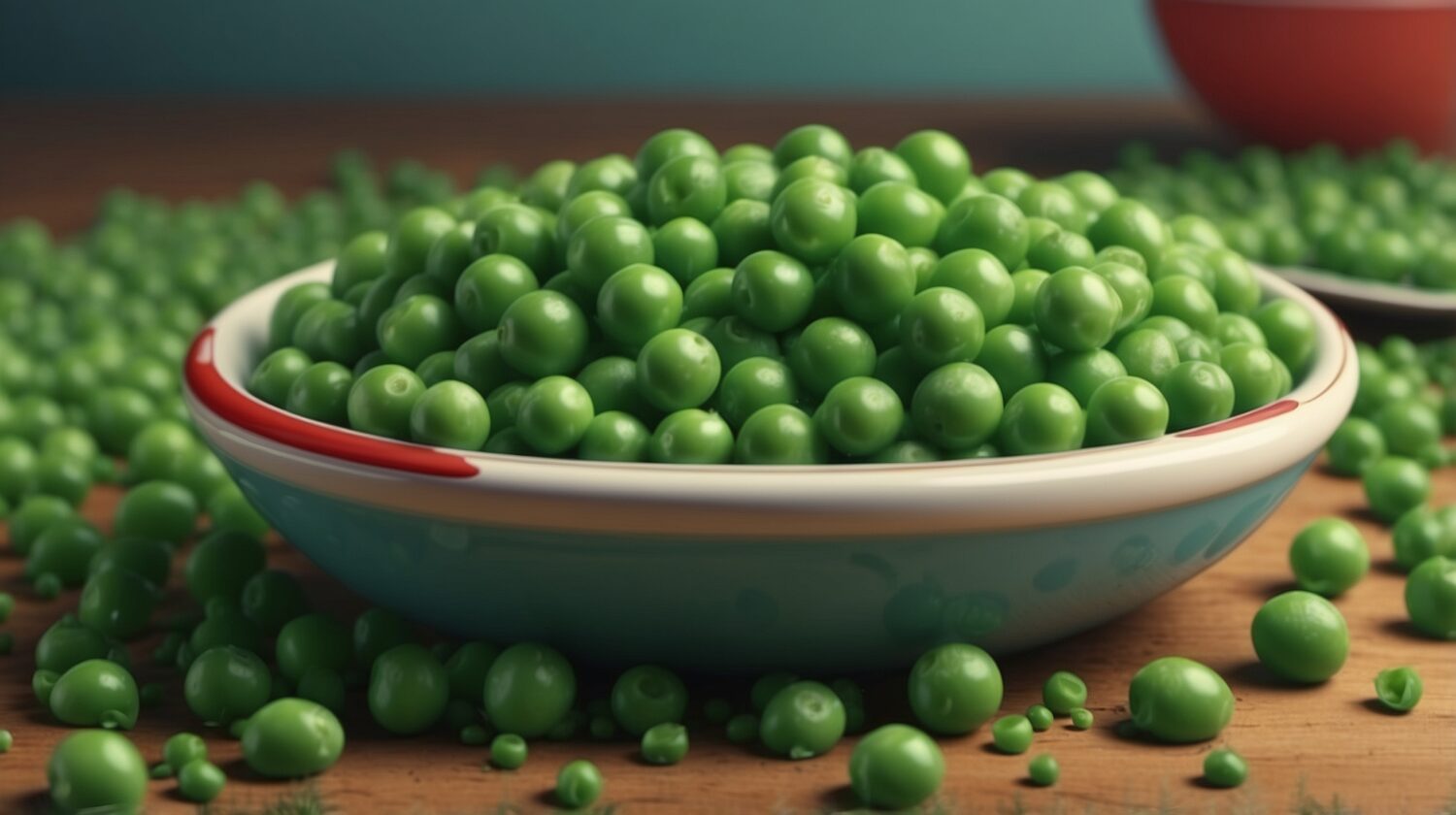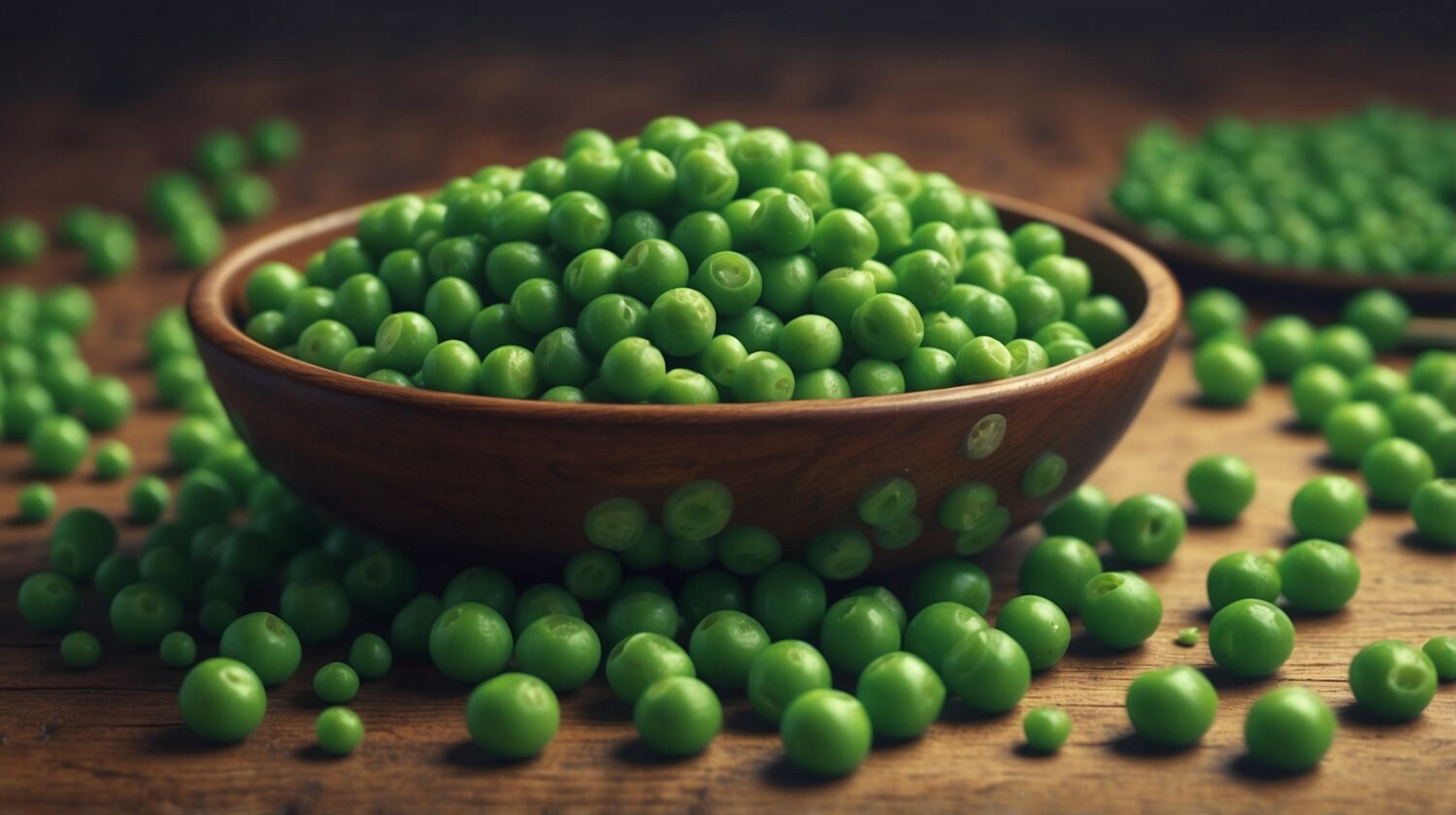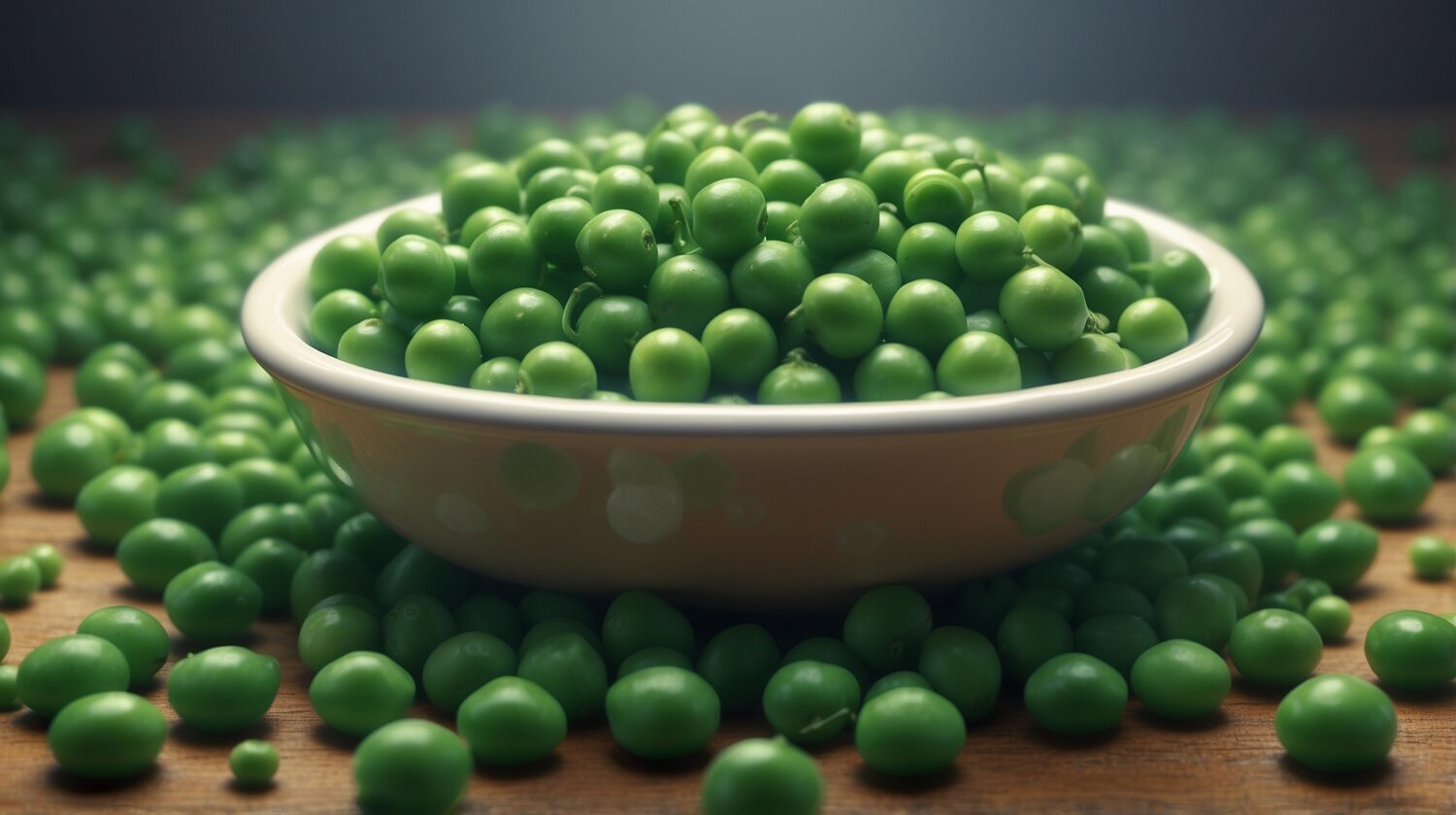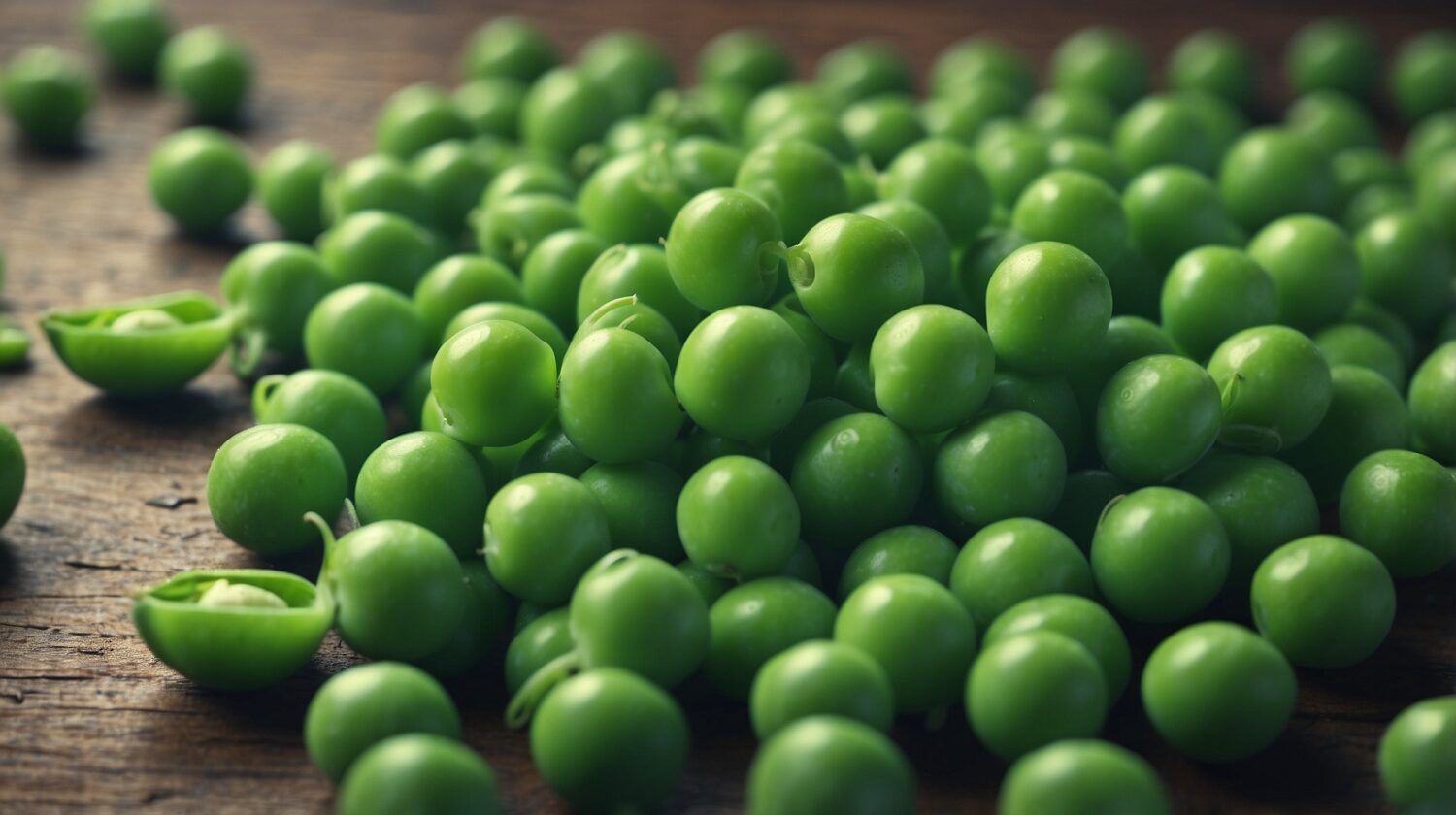Raw or cooked, peas are super amazing. They offer a ton of benefits. I’ve always loved peas. They were a staple in my childhood dinners. Mom would put them in everything—soups, stews, even mac and cheese. So, let’s dive into why peas are good for you. Trust me, you’ll be surprised by all the health perks these tiny green gems offer.
The Nutritional Powerhouse: Pea Benefits
When we talk pea benefits, it’s hard to know where to start. Do you care about protein? Fiber? Vitamins? Peas have got it all. This isn’t just hearsay; research supports it. According to the USDA National Nutrient Database, one cup of green peas has around 8 grams of protein, 7 grams of fiber, and essential vitamins like A, C, K, and several B vitamins. These nutrients contribute to overall well-being in so many ways.
Protein: The Muscle Builder
If you’re into fitness, you probably know the importance of protein. Guess what? Peas are a fantastic source. Doesn’t matter if you’re vegan or just need extra protein; peas can help you out. I remember bulking up for track meets in high school. Our coach always suggested getting protein from various sources, and peas were a non-negotiable. They helped build muscles without the additional fat found in some animal proteins.
Fiber: The Digestive Buddy
My family has a history of digestive issues, which makes fiber a big deal for us. One of the key health benefits of peas is their fiber content. That fiber helps you feel full longer and supports a healthy digestive system. A happy gut means a happy life, right? A bit TMI, but adding peas to my diet has seriously minimized my own stomach problems. Plus, a study from the Institute of Food Science & Technology shows that diets high in fiber lower the risk of various diseases, including colon cancer. Can’t argue with that.
Vitamins and Minerals Galore
Peas aren’t just about protein and fiber. They’re loaded with vitamins and minerals too. Let’s break down a few of the heavy hitters.
Vitamin C: The Immunity Booster

We always hear that vitamin C is good for immunity. And it’s true. Just a serving of peas offers a good chunk of your daily required intake. During cold and flu season, I always throw a bunch of peas into my meals to up that vitamin C. Less time being sick is always a win.
Vitamin K: For Strong Bones
Vitamin K isn’t as talked about, but it’s just as important. Strong bones aren’t just for the elderly. I’ve always been an active person, biking to work and doing weekend hikes. So I care about bone health. One serving of peas provides a quarter of your daily requirement for vitamin K. They’re like tiny bone warriors.
Health Benefits of Peas: What’s The Deal?
Alright, enough about nutrients. Let’s talk about specific health benefits of peas. From heart health to better eyesight, peas play a major role.
Heart Health: Love Your Ticker
Heart disease runs in my family, so I keep an eye on anything that can support heart health. The Harvard School of Public Health mentions that dietary fiber, potassium, folate, and vitamin B6 found in peas help in reducing heart disease risk. They can lower bad cholesterol levels too. My dad started adding peas to his diet, and his recent check-up showed improved cholesterol levels. Pretty solid, right?
Eye Health: Keeping the Vision bright
Another biggie is eye health. Lutein and zeaxanthin, found in green peas, can fight off eye diseases. If you’re into playing video games or spend hours on the computer, eye health matters. According to WebMD, these two compounds can reduce the risk of cataracts and age-related macular degeneration. I mean who doesn’t want to keep their vision sharp?
Weight Management: Stay Fit

Trying to shed some pounds? Peas might just be your new best friend. They’re low in calories but pack in nutrients and fiber—helping you feel full longer. I try to maintain a healthy weight, and swapping out calorie-dense foods for peas is a game-changer. They’re also easy to add to just about anything, from salads to smoothies.
Anti-inflammatory Properties: Fight Inflammation
Inflammation is another huge issue. From arthritis to general aches and pain, lots of problems boil down to inflammation. Certain compounds like pisumsaponins and pisomosides in peas have anti-inflammatory properties. I was skeptical at first, but after adding more peas to my diet, I swear my knee pain from old soccer injuries felt better.
Pea Varieties: More Than Just Green Peas
To jazz things up, let’s talk about different types of peas. Knowing your varieties can make meals more fun and versatile.
Sugar Snap Peas vs. Snow Peas
Most of us are familiar with green peas, but have you tried sugar snap peas or snow peas? They’re crunchy and great for snacking. Sugar snaps combine the sweetness of green peas with the crunch of snow peas. Ideal for stir-fries or even chomping raw while watching TV.
Split Peas: Not Just for Soup

Split peas are another fantastic variety. They’re usually used in soup but are versatile. After a long workout, I love making a hearty split pea stew. High in protein and fiber, they’re also super filling.
How to Include More Peas in Your Diet
You might be sold on the health benefits of peas, but wondering how to include more peas in your diet? Glad you asked! Here are some easy and tasty ways to up your pea game.
Simple Pea Recipes
Let’s face it, nobody has time for a complicated recipe. So, here are some quick fire ways to add peas to your meals.
Pea Salad
Nothing screams summer like a fresh pea salad. All you need are a few simple ingredients—frozen peas, a handful of mint, some feta cheese, lemon juice, and a drizzle of olive oil. Voila, easy and delicious!
Pea Smoothie
Hear me out—pea smoothie might sound weird but it’s a sneaky way to get those nutrients. I toss a handful of frozen peas into my morning smoothie along with spinach, banana, and almond milk. Trust me, you can’t even taste the peas, and the health benefits of peas are there.
Sneaky Pea Additions
Sometimes, the best foods are the ones you don’t even notice. Here are some ways to sneak peas into meals.
Soups and Stews
Say you’re making chicken soup. Just toss in a cup of peas! They blend right in and elevate the dish.
Pasta Dishes
Adding peas to pasta dishes is a low-effort, high-reward move. Whether it’s spaghetti carbonara or mac and cheese, a handful of peas boosts the nutrient profile.
Peas: Planet-Friendly Choice
Peas aren’t just good for you. They’re also good for Mother Earth, making them an all-round win.
Sustainable Farming: Eco-Friendly Peas
Peas enrich the soil with nitrogen. They cut back on the need for synthetic fertilizers. From an environmental point of view, they’re superstars. The more peas farms plant, the better it is for the ground. According to the Food and Agriculture Organization of the United Nations, legume plants like peas also use less water than many other crops. Sustainable and nutritious? Yes, please.
Low Carbon Footprint
Eating less meat is another way to be easy on the planet. Since peas are a great protein source, they can serve as an alternative. That’s something to feel good about. My friend shifted to a plant-based diet, and peas became a go-to for him. He’s now feeling better and kinder to the planet, a double whammy of benefits.
Common Questions About Peas
Are there questions lingering in your mind about peas? Let’s address some common ones.
Are Peas Keto-Friendly?
Short answer: sorta. Peas have carbs, so they’re not the first food that comes to mind for keto diets. But in moderation, they can fit in. I’ve tried keto, and a handful of peas here and there worked fine for me.
Can You Eat Peas Raw?
Sure can. Fresh garden peas can be eaten raw, and sugar snap peas and snow peas are also tasty raw. Just be cautious with raw, frozen peas as they’re typically blanched.
Are Canned Peas Good?
Canned peas are handy in a pinch, but fresh or frozen peas are generally better. Less sodium and more nutrients. When I’ve got no time, canned peas save the day. Just give them a good rinse to reduce the sodium content.
Allergies?
Uncommon but possible. Pea allergies exist, so always be cautious if trying them for the first time. Someone in my running club broke out in hives after eating peas. Better safe than sorry—talk to your doc if you notice symptoms.
